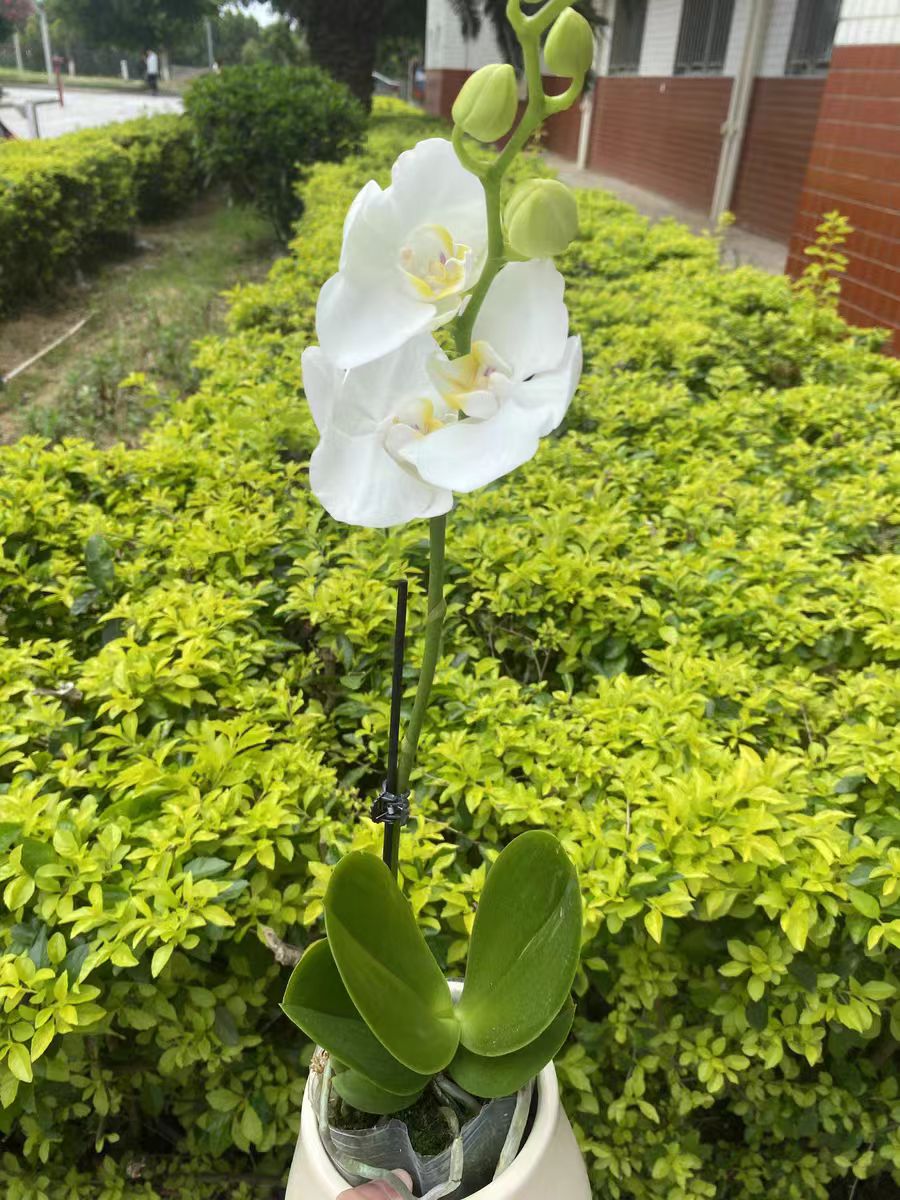When Phalaenopsis at home grow luxuriantly, many flower enthusiasts may have the idea of propagating them through division. However, whether it is suitable to divide Phalaenopsis in high-temperature environments is a question worth exploring in depth.
From the perspective of Phalaenopsis' growth habits, high temperatures are not suitable for division. Native to tropical and subtropical rainforest regions, Phalaenopsis prefer warm, humid, well-ventilated, and semi-shady environments, with an optimal growth temperature range of 15–28°C. When the ambient temperature consistently exceeds 30°C, Phalaenopsis enter a semi-dormant state with slow or even stagnant growth. Division operations will cause a certain degree of damage to the plant, disrupting its root system and nutrient transport system. At high temperatures, the plant's self-healing ability weakens, and wound healing slows down, making it difficult for Phalaenopsis to recover quickly after division, and the survival rate of new plants will significantly decrease.
High-temperature environments also bring many external factors that are unfavorable to the survival of divided Phalaenopsis. First, high temperatures are often accompanied by high humidity, especially in the sweltering summer environment, which creates an ideal condition for the growth of bacteria and fungi. The exposed wounds of divided Phalaenopsis are highly susceptible to pathogen infection, leading to diseases such as soft rot and root rot, which can even cause the entire plant to die in severe cases.
Second, water evaporates extremely quickly at high temperatures. The root system of divided Phalaenopsis is damaged, reducing its water absorption capacity and making it difficult to meet the plant's water needs under high temperatures, which can easily lead to dehydration and wilting. Even if water is frequently added, excessive soil moisture may cause root hypoxia and rot.
If Phalaenopsis are mistakenly divided during high-temperature seasons, a series of remedial measures should be taken to improve the plant's survival rate. First, move the divided Phalaenopsis to a cool and well-ventilated place, avoid direct sunlight, and use shade nets to keep the temperature below 30°C as much as possible.
Second, strictly control the frequency and amount of watering, keeping the growing medium slightly moist. At the same time, increase air humidity by spraying water mist around the plant, but be careful to avoid water droplets remaining on the leaves and wounds for a long time. Additionally, appropriately use plant fungicides to disinfect the plants and growing medium to prevent the occurrence of diseases.
Dividing Phalaenopsis at high temperatures is not a wise choice. The best time for division should be in spring and autumn when the temperature is suitable, and Phalaenopsis are in a vigorous growth period. After division, the plants recover quickly, and the survival rate of new plants is high. Flower cultivation is an art that requires a combination of patience and scientific knowledge. Only by following the growth rules of Phalaenopsis can this beautiful "Queen of Orchids" bloom more charmingly, and more healthy and beautiful Phalaenopsis plants can be cultivated through reasonable division and propagation.
Can Phalaenopsis be divided at high temperatures?

Share with
Tagged in :




Leave a Reply